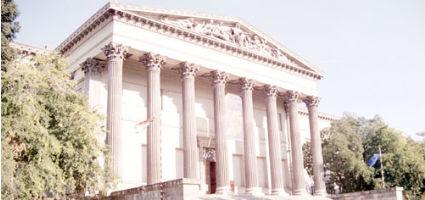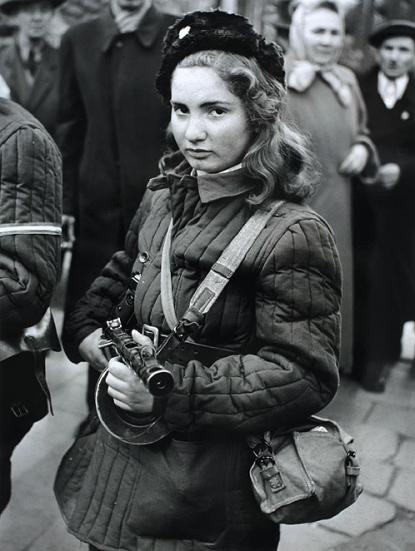2024. April 24. Wednesday
Hungarian National Museum - Budapest
 |
Address: 1088, Budapest Múzeum körút 14-16.
Phone number: (1) 338-2122
E-mail: info@hnm.hu
Opening hours: Tue-Sun 10-18
|
The exhibition has closed for visitors.
2008.10.28. - 2008.11.30.
Museum tickets, service costs:
|
Ticket for adults
|
1100 HUF
|
|
|
Ticket for students
|
550 HUF
|
|
|
Ticket for soldiers
|
550 HUF
|
|
|
Ticket for pensioners
|
550 HUF
|
|
|
Ticket for families
(2 adults + children)
|
1150 HUF
|
/ family
|
|
Individual guide
|
400 HUF
|
/ capita
|
|
Group guide
(max. 5 people)
|
1800 HUF
|
/ group
|
|
Group guide
(11-15 people)
|
6000 HUF
|
/ group
|
|
Group guide
(max. 15 people)
|
5500 HUF
|
/ group
|
|
Group guide
(16-25 people)
|
9700 HUF
|
/ group
|
|
Group guide
(1-5 people)
|
1500 HUF
|
/ capita
|
|
Group guide
(6-10 people)
|
13000 HUF
|
/ group
|
|
Group guide
(11-15 people)
|
16000 HUF
|
/ group
|
|
Group guide
(16-25 people)
|
24000 HUF
|
/ group
|
|
Group guide for students
(max. 25 people)
|
4500 HUF
|
/ group
|
|
Group guide for students
(max. 15 people)
|
6000 HUF
|
/ group
|
|
Group guide for students
(max. 25 people)
|
12000 HUF
|
/ group
|
The Western World turned with almost unanimous sympathy towards the Hungarian Revolution in October 1956, and this sentiment was very much supported by the dramatic pictures of illustrated magazines. About forty foreign press photographers visited Hungary during the few days of the revolution in late October - early November, but to date only a small number of photos are known of their material, and even fewer are housed in Hungarian public collections.

Thus it was a very special occasion in June 2008 when twelve outstanding photographs arrived to the Historical Photographic Collection of the Hungarian National Museum, donated by two Danish Foundations, and mediated by the Copenhagen geographer Henning Schultz.
In 1956, the fifteen-year-old Henning Schultz and his school fellows were caught by the Hungarian Revolution, and by the famous Danish photographer Vagn Hansen's Hungarian photos that appeared in Billed Bladet, Denmark's prestigious illustrated weekly magazine. The front cover of one of the magazine's November issue inspired enthusiasm in the young boys: the photo of the solemn girl of their age, holding a sub-machine gun in her hands, became a symbol of heroism for them.
Henning Schultz cherished this memory for decades, and when the fiftieth anniversary of the Hungarian Revolution had been approaching he decided to find the girl from the front cover, and if she was still alive, he would give her the magazine he had been safeguarding for half a century. During his research, he talked with the photographer, today 94 years old, and paid a visit to the Historical Photographic Collection of the Hungarian National Museum, too.
Seeing Vagn Hansen's Hungarian photographs, the fellows of the photograph collection would have liked to buy some of the press photographer's pictures, but it turned out that the museum was unable to pay the internationally average price. Then Henning Schultz asked the museum to give a declaration of will about its intention to acquire the photos, and looked for help at a number of Danish organizations and foundations. His efforts eventually bore fruits: Axel Pitzner Fonden and Velux Fonden have purchased and then donated twelve photographs to the Hungarian National Museum. The pictures have been chosen by Vagn Hansen himself, and the superb 30×40 cm enlargements have been made under his supervision.
In the meantime, the investigation on Erika, the 'cover girl', lead to a sad conclusion: according to interviews with her old school friend József Árki, found by Henning Schultz in Copenhagen, the brave girl saved the wounded uprisers as a Red Cross volunteer and died during the fights after the Soviet invasion of 4 November.
Erika's portrait is of course among the photographs donated to the museum, so far unknown in Hungary but one of the photo icons of the Hungarian Revolution in Denmark. Little is known about the young girl's tragic life, but her photo from the days of the revolution is an exceptional example of how an impressive photograph is able to evoke deep and long-lasting emotions, create a myth and urge to action.
Dr. Katalin Jalsovszky

Thus it was a very special occasion in June 2008 when twelve outstanding photographs arrived to the Historical Photographic Collection of the Hungarian National Museum, donated by two Danish Foundations, and mediated by the Copenhagen geographer Henning Schultz.
In 1956, the fifteen-year-old Henning Schultz and his school fellows were caught by the Hungarian Revolution, and by the famous Danish photographer Vagn Hansen's Hungarian photos that appeared in Billed Bladet, Denmark's prestigious illustrated weekly magazine. The front cover of one of the magazine's November issue inspired enthusiasm in the young boys: the photo of the solemn girl of their age, holding a sub-machine gun in her hands, became a symbol of heroism for them.
Henning Schultz cherished this memory for decades, and when the fiftieth anniversary of the Hungarian Revolution had been approaching he decided to find the girl from the front cover, and if she was still alive, he would give her the magazine he had been safeguarding for half a century. During his research, he talked with the photographer, today 94 years old, and paid a visit to the Historical Photographic Collection of the Hungarian National Museum, too.
Seeing Vagn Hansen's Hungarian photographs, the fellows of the photograph collection would have liked to buy some of the press photographer's pictures, but it turned out that the museum was unable to pay the internationally average price. Then Henning Schultz asked the museum to give a declaration of will about its intention to acquire the photos, and looked for help at a number of Danish organizations and foundations. His efforts eventually bore fruits: Axel Pitzner Fonden and Velux Fonden have purchased and then donated twelve photographs to the Hungarian National Museum. The pictures have been chosen by Vagn Hansen himself, and the superb 30×40 cm enlargements have been made under his supervision.
In the meantime, the investigation on Erika, the 'cover girl', lead to a sad conclusion: according to interviews with her old school friend József Árki, found by Henning Schultz in Copenhagen, the brave girl saved the wounded uprisers as a Red Cross volunteer and died during the fights after the Soviet invasion of 4 November.
Erika's portrait is of course among the photographs donated to the museum, so far unknown in Hungary but one of the photo icons of the Hungarian Revolution in Denmark. Little is known about the young girl's tragic life, but her photo from the days of the revolution is an exceptional example of how an impressive photograph is able to evoke deep and long-lasting emotions, create a myth and urge to action.
Dr. Katalin Jalsovszky
